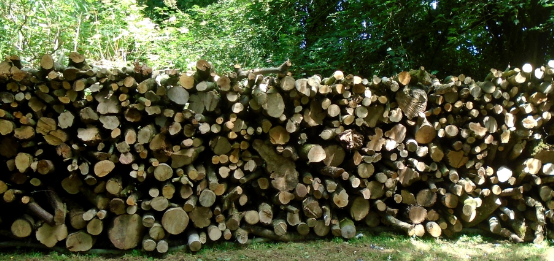Turning Woodland into Wealth: How Rural England Prosperity Funding Helped Transform Woodland into a Community Resource

The Challenge: Reviving Diseased Woodland and Supporting the Local Community
A rural estate faced a challenge with a significant area of unmanaged and diseased woodland, affected by Ash Dieback and Acute Oak Decline. The woodland, once a valuable natural resource, had been unmanaged. Many local villagers to the Estate were reliant on wood fuel for heating their homes, creating a unique opportunity to address both the woodland’s decline and the community’s fuel needs.
The Estate saw the potential to process logs from the woodland and sell them to the local community at a discounted rate, turning an underutilized resource into a valuable commodity. However, to bring this vision to life and properly manage the woodland, the project needed financial support that the estate couldn’t generate on its own.
The Solution: Rural England Prosperity Fund Fuels Sustainable Woodland Management
With the help of the Rural England Prosperity Fund, the estate was able to move forward with this diversification project. The funding allowed for the purchase of equipment needed to process the logs and begin managing the woodland sustainably. This grant was essential in turning what could have been waste into a profitable, eco-friendly fuel source for the community.
The Results: A New Income Stream, Local Benefits, and Environmental Gains
This project brings multiple benefits to both the Estate and the surrounding community. By adding value to a previously wasted natural resource, the estate has created a new income stream for its business. The sale of discounted logs provides a locally produced, low-carbon alternative to other fuels, supporting the community’s shift towards sustainability.
Beyond the economic benefits, the project has also improved woodland management and restoration efforts. The healthier woodlands will not only increase carbon sequestration in the soil but also enhance the biodiversity of the area, creating better habitats for local flora, fauna, and wildlife.
Conclusion: A Win for the Environment, the Estate, and the Community
This case study highlights how the Rural England Prosperity Fund has facilitated a project that addresses environmental, economic, and community needs. By transforming diseased woodland into a managed, sustainable resource, the Estate has not only created a new revenue stream but also provided the local community with a greener, more affordable fuel option. The project’s environmental benefits, from increased carbon storage to enhanced biodiversity, make it a model of rural sustainability and diversification.
If you would like to benefit from ARC’s funding solutions, finance options and rural business development solution-based advice please contact:


